Food Security: Building on a success story
Bangladesh has made commendable progress in domestic food grain, especially rice production due to rapid dissemination of HYV technology. However, while Bangladesh has experienced steady progress in food availability, the country faces a number of persistent and emerging challenges. Future agricultural growth and food as well as nutrition security are threatened by population growth, shrinking resource base (such as land and water) and the deterioration of their quality and productivity.
Moreover, the adverse impacts of climate change compounded by minimal investments in agricultural research and deteriorating extension services are likely to exacerbate the problem of food and nutrition security in the coming decades. In fact, whatever progress has been made would be difficult to sustain in view of the growing pressure of population on scarce natural resources.
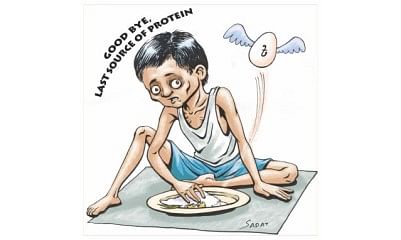 In the wake of global food crisis that originated from exorbitant prices of cereals, fuel and fertilisers, Bangladesh as a net food importing country experienced severe food insecurity at both the national and the household level. It was realised that both domestic production system as well as the existing food procurement, storage and distribution system needed strengthening to address the problem of food insecurity, especially for those who are most vulnerable.
In the wake of global food crisis that originated from exorbitant prices of cereals, fuel and fertilisers, Bangladesh as a net food importing country experienced severe food insecurity at both the national and the household level. It was realised that both domestic production system as well as the existing food procurement, storage and distribution system needed strengthening to address the problem of food insecurity, especially for those who are most vulnerable.
The present paper examines the past trends, the present status and the evolving policies related to availability, accessibility and utilisation of foods to those who need them most. This provides an appropriate setting which, would enable us to identify the existing policy gaps, policy options and public sector interventions through various programs to ensure food security in the country.
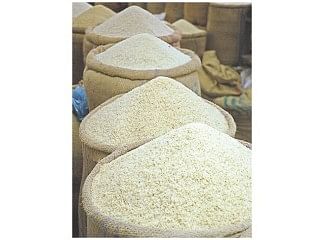 Food availability and domestic production of food crops
Food availability and domestic production of food crops
Availability of food depends on both domestic production and imports. Major items of food production in Bangladesh include rice, wheat, potato, pulses, oilseeds, sugarcane and vegetables. These food items account for almost 80 per cent of total calorie and protein intake. Of these, rice and wheat alone contribute to 74 percent and 57 percent of total per capita calorie and protein intake respectively.
Rice production has shown respectable growth due to adoption of high-yielding varieties facilitated by expansion of minor irrigation especially in the Boro (winter) season. In fact, the growth in rice production kept pace with population growth in the 1980s and has surpassed it by a significant margin since then. The easy sources of increasing rice production, however, have been exhausted. Sustaining the growth will be difficult without development and diffusion of technologies in the unfavourable ecological areas. Bangladesh does not have a favourable agro-climatic environment for growing wheat. Wheat is mostly grown in the north-western region of the country which has a relatively longer winter period. In recent years, maize has been replacing wheat because of its higher yield, profitability and suitability to the agro-ecological conditions in Bangladesh.
The rapid expansion in the production of cereals was partly achieved through reductions in area for production of pulses, oilseeds and sugarcane. Pulses and oilseeds are important sources of protein and micronutrients, especially for the poor. The decrease in the production of these crops has had adverse impact on nutritional balance among the people. There has been perceptible decline in the production of pulses and sugarcane, and somewhat of oilseeds. The production of potato and vegetables on the other hand, has shown significant growth in recent years.
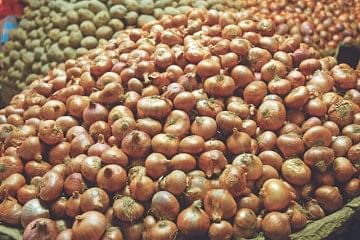 Import of food items
Import of food items
The country is heavily dependent on import of almost all food items to meet the demand of the growing population. The import of rice remained, on average, at around 0.5 million tons per year, with substantial increase in imports in years following poor harvests due to floods and droughts. In some years, following bumper harvests, the government declared achieving self-sufficiency in rice production, only to find the country slipped back to import dependence to meet increasing demand of growing population.
Commercial import of wheat has increased steadily over time despite the growth in domestic production due to the reduction in food aid in recent years. Recent wheat imports, which have reached 2.5 million tons in 2009-10, are mostly on account of the private sector. The other food items for which imports have been increasing fast are oils, pulses, sugar, milk and fruits. The rapidly rising imports of these food items are becoming a major drain on limited foreign exchange earnings of the country. Attempts have been made to promote crop diversification to reduce dependence on imports, but without much success.
Access to food
The major determinant of food entitlement of a household and hence its access to food is obviously the level of income. In Bangladesh, per capita income remained almost stagnant until the end of the 1980s due to slow growth in Gross National Product (GNP) and high growth in population. Income growth has accelerated since 1990, reaching 6.0 to 6.5 per cent in recent years.
As a result, per capita income has been growing at a faster rate of about 4.5 per cent recently. However, available evidence from Household Income and Expenditure Survey indicates growing urban-rural disparity in incomes. The increase in income inequality was moderate in the 1980s but became worse in the 1990s and thereafter in both rural and urban areas. As a result, the impact of recent acceleration in income growth on poverty reduction has remained modest.
The trend in real wage rate, especially of the agricultural labor, is often used as an alternative indicator to assess changes in the living conditions of the poor. It should, however, be mentioned that the wage rate may reflect changes in income of the extreme poor and not necessarily of the moderate poor. The latter group may earn their livelihood more as marginal and small farmers, while the former may derive the major portion of their income from participation in the labor market. The estimates of real wage (as deflated by the price of rice) show a steady increase in real wages since 1983-84, except in years of recent global inflation (2007 and 2008) when rice prices significantly increased.
Movement in real wage determines affordability to those who are already employed. In order to have an idea about overall economic accessibility, one needs to look at the trend of underemployment in the country. The rate of underemployment has declined from 43.4 per cent in 1989 to 31.9 percent in 1999-2000, and further to 28.7 percent in 2009, thereby indicating an improvement in economic accessibility over the last two decades. However, it is somewhat worrying to note that the rate of decline has slowed down considerably over the last decade compared to the preceding one.
Despite the gains achieved by Bangladesh in augmenting food availability, public food distribution in general, and social safety net programmes in particular, are needed to assist the poor to be food secure by increasing their access to food through transfer programmes. Some are relief programmes that aim primarily at relieving immediate distress, generally due to natural disasters. Other programs have explicit development objectives. These include, among others, rural infrastructure development, boosting primary school enrollment rates and human capital development. The size and composition of the Public Food Distribution System (PFDS) has changed significantly over the last two decades.
Although the size of PFDS has declined, the share of food grain distributed to targeted food assistance programs has increased over time; about two-thirds of the total food grain channeled through the PFDS is now directed towards these programs. The remaining one-third passes through other so-called monetised, sales channels of the PFDS.
Poverty trends in Bangladesh: Economic accessibility
The incidence of poverty, as measured by the headcount ratio, declined from 58.5 per cent in 1983-84 to 31.5 per cent in 2010. Both rural and urban poverty declined. The incidence of rural poverty, however, remained higher than that of urban poverty. Over the 1984-2010 periods, the absolute number of poor in the country decreased by about 10 million while total population increased by about 52.0 million. The number of rural poor declined from 50.3 million in 1983-84 to 38.7 million in 2010. The number of urban poor, however, increased by 2.0 million over the same period.
Access to food for most vulnerable groups
The accessibility of food encompasses both economic and physical accessibility. Access to food for the most vulnerable groups should be assessed in terms of physical accessibility.
The persons who are living in chronic poverty are those who are most vulnerable nutritionally. An estimate of the nutritionally vulnerable people can be obtained from the incidence of poverty estimated by Direct Calorie Intake Method (DCIM) by BBS in different survey years. The incidence of absolute poverty (in terms of percentage of total population with less than 2,122 kcal/person/day) has declined from 55.7 per cent in 1985-86 to 44.3 per cent in 2000, and further to 40.4 per cent in 2005.
Although the incidence of hardcore poverty (with less than 1,805 kcal/person/day) increased during the late eighties (1988-89) and early nineties (1991-92), it then declined to 20.0 per cent in 2000 and remained almost the same thereafter.
Utilisation (Absorption) of food
The National Nutrition Surveys conducted by the Institute of Nutrition and Food Science (INFS) report a consistent decline in the energy intake till the mid-1990s. More recent data is not available. Per capita energy intake for rural people reportedly has declined from 2,251 kcal during 1962-64 to 2,094 kcal in 1975-76, 1,943 kcal in 1981-82, and further to 1,892 kcal in 1995-96. The decline in the protein intake was even sharper. In contrast, the Household Income and Expenditure Survey (HIES) data show that during the early 1980s and 1990s, per capita calorie intake went up steadily for the rural population, but declined for the urban population due to the reduction in per capita cereal consumption. Between 1991-92 and 2000, urban per capita calorie intake fell by about 5 per cent, from 2,258 kcal to 2,150 kcal. Thus the picture on the trend in nutritional status obtained from different sources is confusing. It remains an issue of great controversy.
During the last two decades, Bangladesh has made significant progress in several areas such as higher child immunisation rates, augmented life expectancy, lower infant mortality, declining total fertility rates (TFR) and larger number of people having access to safe water.
Despite these gains, the public health scenario is dismal in Bangladesh. Access to adequate healthcare still eludes many. Prevalence of malnutrition, particularly child malnutrition is very high. Rural-urban disparity in child malnutrition is quite stark with the percentage of rural malnourished children being significantly higher than that of urban areas. Bangladesh also has one of the highest prevalence of low birth weight children in the world.
Despite impressive gains in increasing domestic food grain production, problems of food and nutrition security remains. Bangladesh is yet to achieve comprehensive food security that resolves the problems of inadequate food intake and chronic malnutrition among those who are poor and vulnerable. Addressing these problems satisfactorily would not only require rethinking of strategies and policies to promote food security in the country but decisive actions by all stakeholders -- the government, the NGOs, the private sector and individual households. In fact, ensuring food security through physical availability and economic access to food would continue to be a major challenge for Bangladesh in the coming years.
To meet these challenges, an integrated strategy encompassing major aspects of comprehensive food security namely, (a) adequacy of food supply through increased domestic production and imports (b) access to food through public distribution and expanded safety net programs and (c) improved food utilisation and nutrition is required.
Bangladesh faces formidable challenges to feed its population in the future from an increasingly vanishing and degraded natural resource base for agriculture. Crop agriculture is heavily dominated by the cultivation of rice. Bangladesh has experienced over the last four decades significant growth in food grain production mainly due to increasing reliance on high yielding variety (HYV) rice, especially in the Boro (winter) season. Crop agriculture has to face many challenges. Natural disasters regularly damage output.
In many places there are serious problems with soil degradation and poor seed quality. The technology development and dissemination systems are constrained by both lack of resources and institutional weaknesses. In addition, water-use efficiency is low and climatic variability is already exacting a heavy toll on agricultural production. The future climate changes are likely to magnify these adverse effects.
A better understanding of poverty dynamics and linkages between adverse shocks (such as massive floods and droughts), rural income, credit markets and nutrition is important. Appropriately targeted income transfers, credit programs and insurance mechanisms in times of crisis may generate very high pay-offs in reducing poverty and improving food security. These interventions should be part of a broader social protection strategy that is both cost-effective and comprehensive in coverage.
Bangladesh still faces the challenge of food and nutrition security, given its high though declining poverty and malnutrition levels. Although the incidence of poverty declined from 40% in 2005 to 31.5% in 2010, about 50 million people still live below the poverty line. While growth alone cannot take care of the vulnerable groups and social safety net programs are needed, it is also true that higher growth resulting in greater employment and income earning opportunities is a more sustainable solution to ending poverty and hunger.
This is in conformity with inclusive development and pro-poor growth approach now being practiced in Bangladesh and elsewhere.
Food security has been very high on the policy agenda and the government has been making efforts to augment domestic production of food grain through technological innovations and investments in irrigation, infrastructure development and subsidies.
No single actor can achieve as much as the synergy in partnerships that key stakeholders can provide. The partnerships can be between government and the public sector or with civil society organizations, or with multilateral agencies and bilaterally between two countries through exchanges of information, analysis, technologies and other resources.
The writer is former Director General B.I.D.S.

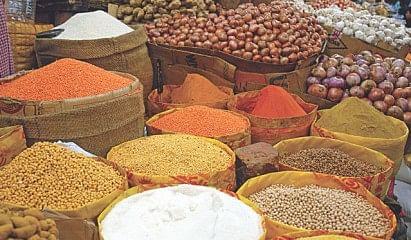
 For all latest news, follow The Daily Star's Google News channel.
For all latest news, follow The Daily Star's Google News channel. 


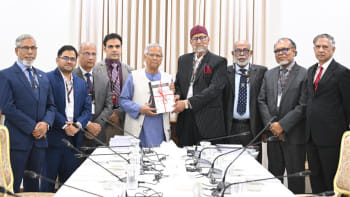
Comments